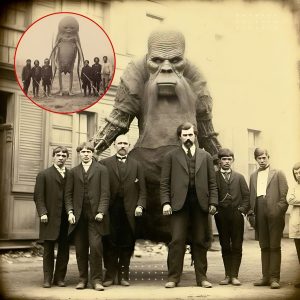WATCH VIDEO BELOW ??????
Unveiling Ancient Mysteries: The Shocking Discoveries in a 12,000-Year-Old Cave

In a video that has captivated viewers, archaeologists and scientists reveal a series of ancient findings that continue to baffle the world. These discoveries, located in caves and ancient sites, challenge the conventional understanding of human history. From the 12,000-year-old Göbekli Tepe in Turkey to mysterious artifacts in Romania, each new finding brings with it more questions than answers.
Göbekli Tepe: The Oldest Temple in the World?
Perhaps the most astonishing discovery mentioned is the ancient site of Göbekli Tepe, situated in modern-day Turkey. Estimated to be around 11,400 years old, this prehistoric structure is believed to be one of the earliest known man-made religious sites. Some scholars even speculate that Göbekli Tepe could have been the biblical Garden of Eden, while others suggest it may have served as a fertility cult’s ceremonial ground. Its massive stone pillars and carvings predate agriculture and organized society, leaving scientists perplexed as to how a civilization so primitive could have built such a monumental structure.

Romanian Tablets: A Forgotten Alphabet?
Another groundbreaking discovery comes from Romania, where a set of tablets dating back to 5300 BC were unearthed. These ancient tablets are believed to contain an alphabet that predates any known writing systems. If confirmed, this would require historians to rewrite the timeline of human literacy. The mystery surrounding these tablets deepens as no one has been able to fully decode their meaning or origin.
The Abydos Hypogeum: Egypt’s Underground Enigma
Egypt’s ancient history is no stranger to monumental discoveries, but the underground complex in the ancient city of Abydos continues to puzzle archaeologists. Known as the “Hypogeum,” this subterranean structure contains intricate carvings and hieroglyphs that have stumped researchers for over a century. Its purpose, construction techniques, and age remain shrouded in mystery, leaving historians scrambling for answers.
Other Astonishing Finds: The Bizarre and the Unexplained
The video also explores other incredible discoveries from around the world:
- The Bone Cave of Malta: A cave on the Maltese islands revealed the remains of extinct dwarf animals, including pygmy elephants, raising questions about how such creatures came to inhabit the islands.
- Jebel Kerma, Jordan: This region has been abandoned and resettled multiple times over the last 4,000 years, and the reasons for its cyclical abandonment remain unclear, suggesting a hidden history of natural or human-made catastrophes.
- Medieval Assassin Ring: In Bulgaria, a mysterious medieval ring was discovered, believed to have been used for poisoning victims. The craftsmanship suggests it may have belonged to an assassin, adding a layer of intrigue to medieval Bulgarian history.
The Quest for Answers
As the video emphasizes, these discoveries are not just about uncovering artifacts, but about understanding the complexities of ancient civilizations. While modern science has made incredible strides, these findings highlight the limitations of our knowledge of the distant past. Each revelation pushes the boundaries of what we think we know about early human societies, their cultures, and their technological capabilities.
With more mysteries yet to be solved, these ancient sites continue to inspire curiosity and drive scientists to dig deeper into the origins of humanity. One thing is certain—what has been uncovered is only the beginning. These incredible finds remind us that the ancient world still holds many secrets waiting to be unveiled.
Conclusion: The Unending Mysteries of the Ancient World
These shocking discoveries from the 12,000-year-old cave and other sites around the globe open new windows into ancient human history. Each artifact, structure, and inscription discovered forces us to rethink our understanding of civilization, technology, and culture. As scientists work tirelessly to decode the secrets of these ancient places, the past remains an endless puzzle—one that will continue to shape our future understanding of who we are and where we come from.





